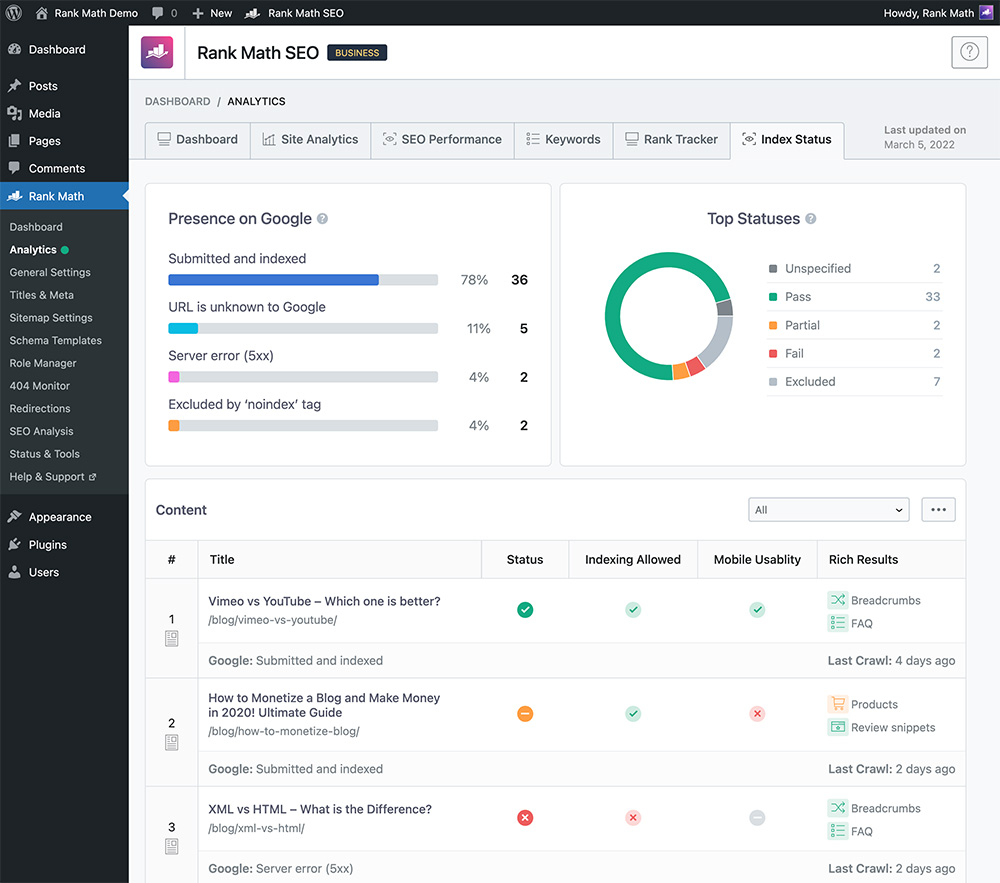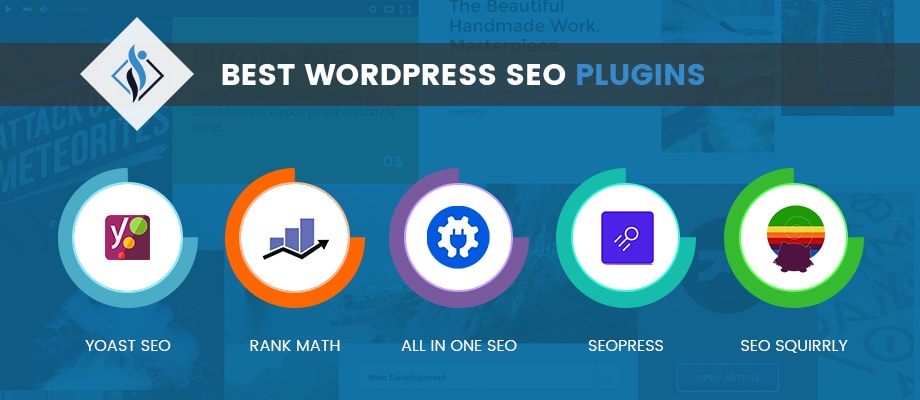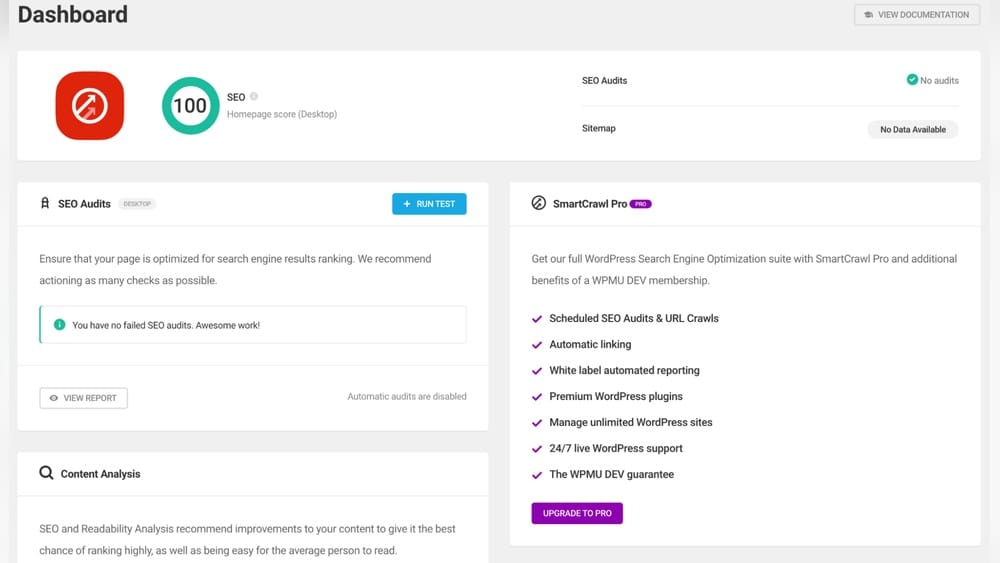Discover the best SEO tool for WordPress to optimize your site, improve visibility, and rank higher on Google with ease.
That’s exactly what a good SEO plugin for WordPress can do for you. Whether you’re just starting or looking to boost your existing site’s rankings, the right SEO tool will make your life simpler and your site more visible. Keep reading to discover which SEO tools are best for WordPress and how they can transform your website’s performance.
Top WordPress Seo Plugins
Choosing the right SEO plugin can boost your WordPress site’s search rankings. These plugins help you optimize content, manage technical SEO, and improve site visibility. The market offers several popular options that suit different needs and skill levels. Here are some top WordPress SEO plugins that stand out for their features and ease of use.
Yoast Seo Features
Yoast SEO is a widely used plugin known for its user-friendly interface. It offers real-time content analysis to improve keyword use and readability. The plugin creates XML sitemaps automatically for better indexing. It also handles meta titles and descriptions with ease. Yoast provides tools for social media integration. It checks for duplicate content and helps fix it. Regular updates keep it compatible with the latest WordPress versions.
All In One Seo Benefits
All in One SEO (AIOSEO) is a powerful plugin with a simple setup process. It supports schema markup to improve search result appearance. AIOSEO generates XML sitemaps and optimizes robots.txt files. It offers local SEO options, which is great for businesses. The plugin includes SEO audit checklists to find and fix issues. It also allows control over social media sharing settings. AIOSEO works well for beginners and advanced users alike.
Rank Math Advantages
Rank Math is gaining popularity for its wide range of features. It allows integration with Google Search Console for performance tracking. The plugin supports multiple focus keywords per post. It includes built-in 404 monitoring and redirection tools. Rank Math offers advanced schema types for rich snippets. The setup wizard makes it quick to start using. It provides detailed SEO analysis and suggestions within the dashboard.

Credit: rankmath.com
Keyword Research Strategies
Keyword research is the base of effective SEO. It helps you find the terms your audience uses. Choosing the right keywords increases your site’s visibility in search engines. Good keyword strategies guide your content creation and optimization.
In WordPress, using SEO tools makes keyword research easier and more accurate. These tools help identify valuable keywords and analyze competitors. Let’s explore key strategies to improve your keyword research.
Finding Relevant Keywords
Start by thinking about your topic and audience. Consider what words or phrases they might use. Use simple terms that match your content’s focus. Avoid overly broad or very rare keywords. Balance between popular and less competitive terms.
Look at search volume to see how often keywords are used. Check keyword difficulty to avoid too tough competition. Choose keywords that fit your site’s niche and goals. This makes your content more targeted and effective.
Analyzing Competitor Keywords
Competitor analysis reveals what keywords others use successfully. Identify top-ranking sites in your niche. Use SEO tools to extract their main keywords. See which keywords bring them traffic and rank well.
Focus on keywords where you can compete or find gaps. Look for keywords your competitors miss or ignore. This helps create unique content that meets audience needs. Learning from competitors saves time and boosts your SEO efforts.
Using Keyword Tools
Keyword tools simplify research by providing data and suggestions. Popular tools include Google Keyword Planner, Ahrefs, and SEMrush. They offer search volume, competition, and related keywords.
Use these tools to expand your keyword list. Analyze trends and seasonal changes in keyword popularity. Filter keywords by location or language to match your audience. Many WordPress SEO plugins integrate keyword tools for easy access.
Read More : Best Local Seo Tools: Ultimate Guide to Boost Your Rankings
Content Optimization Tips
Optimizing content is crucial for better search engine rankings and user engagement. Effective content optimization helps your WordPress site attract more visitors and keep them interested. Using the right SEO tools can simplify this process and improve your results.
Writing High-quality Content
Focus on creating original and useful content that answers your audience’s questions. Use clear and simple language. Break text into short paragraphs for easy reading. Include relevant keywords naturally to help search engines understand your topic. Avoid keyword stuffing as it can harm rankings.
Improving Click-through Rates
Craft meta titles and descriptions that catch attention. Use action words and clear benefits to encourage clicks. Keep titles under 60 characters and descriptions under 160 characters. Make sure they match the content on the page. Well-written snippets increase the chance users will visit your site.
Adding Internal Links
Link related posts and pages within your site to guide visitors. Internal links improve navigation and keep users on your site longer. They help search engines discover and index your content better. Use descriptive anchor text to show what the linked page is about. Avoid overloading your content with too many links.
Technical Seo Settings
Technical SEO settings form the foundation of a strong WordPress site. They help search engines crawl and index your site easily. Proper settings improve your site’s visibility and user experience. This section covers key technical SEO steps you must take.
Setting Seo-friendly Permalinks
Permalinks are the URLs of your posts and pages. SEO-friendly permalinks are short, clear, and include relevant keywords. In WordPress, set permalinks to use the post name. This option appears under Settings > Permalinks.
Clear URLs help search engines and users understand your page content. Avoid default numeric or date-based URLs. For example, use yourwebsite.com/seo-tool instead of yourwebsite.com/?p=123.
Creating Xml Sitemaps
An XML sitemap lists all important pages on your site. It helps search engines find and index your content faster. Many SEO plugins for WordPress automatically generate sitemaps.
Ensure your sitemap updates when you add new content. Submit the sitemap URL to Google Search Console. This step improves your site’s crawl efficiency and indexing speed.
Adding Alt Text To Images
Alt text describes images to search engines and users with disabilities. It improves your site’s accessibility and SEO. Write short, descriptive alt text that explains the image content clearly.
In WordPress, add alt text when uploading images or editing them in the Media Library. Avoid keyword stuffing. Use natural language that fits the image purpose.
Site Performance Enhancements
Improving site performance is essential for better user experience and higher search rankings. Faster websites keep visitors engaged and reduce bounce rates. Enhancing your WordPress site’s speed and efficiency helps search engines crawl and index your pages more effectively.
Optimizing Site Speed
Site speed affects how quickly pages load for visitors. Compress images to reduce file sizes without losing quality. Minimize CSS and JavaScript files to decrease loading times. Use lazy loading for images to load content only when visible. Monitor your site’s speed regularly with tools like Google PageSpeed Insights.
Using Caching Plugins
Caching plugins store copies of your web pages to serve them faster. This reduces server load and speeds up page delivery. Popular caching plugins include W3 Total Cache and WP Super Cache. Configure caching settings to suit your site’s needs. Clear cache after updates to show fresh content to visitors.
Choosing Fast Hosting
Your web host affects site speed significantly. Choose hosting providers known for reliability and fast servers. Look for hosts offering SSD storage and CDN integration. Shared hosting can slow down your site during traffic spikes. Consider managed WordPress hosting for better performance and support.
Mobile And User Experience
Mobile and user experience are crucial for WordPress SEO. A site that works well on phones keeps visitors engaged and lowers bounce rates. Search engines favor sites that load fast and are easy to use on any device.
Improving mobile experience helps your site rank better. A smooth, user-friendly site encourages visitors to stay longer and explore more pages. This section covers key steps to enhance mobile responsiveness, navigation, and site health.
Ensuring Mobile Responsiveness
Mobile responsiveness means your site adapts to any screen size. Use a responsive WordPress theme that resizes content automatically. Test your site on different devices to check usability.
SEO tools for WordPress often include features to analyze mobile performance. Fix issues like small fonts or buttons too close together. Fast loading times on mobile also improve user experience and search rankings.
Improving Navigation With Categories And Tags
Clear navigation helps users find content quickly. Organize posts with categories and tags for easy browsing. This structure also helps search engines understand your site better.
Use SEO plugins to manage categories and tags effectively. Avoid too many or too few categories. Keep tags relevant and consistent. Good navigation reduces frustration and keeps visitors on your site longer.
Fixing Broken Links
Broken links hurt user experience and SEO. They cause frustration and lower your site’s credibility. SEO tools can scan your site to find broken links easily.
Regularly check and fix broken links. Replace or remove dead links to keep your site healthy. A well-maintained site improves trust and helps search engines crawl your content better.
Tracking And Analytics
Tracking and analytics are essential for understanding how your WordPress site performs in search engines. They show how visitors interact with your pages. This data helps improve your SEO strategies effectively. Using the right tools, you can monitor traffic, user behavior, and conversion rates. These insights guide adjustments that boost your site’s visibility and ranking.
Setting Up Google Analytics
Google Analytics is a powerful tool to track website traffic. To set it up, create a Google Analytics account. Then, link it to your WordPress site using a plugin like Google Site Kit or MonsterInsights. This connection allows you to see detailed reports directly in your WordPress dashboard. It tracks page views, session duration, and traffic sources.
Monitoring User Behavior
Tracking how users behave on your site reveals what content works best. You can see which pages keep visitors longer and which have high exit rates. Heatmaps and session recordings offer visual insights into user actions. This data helps identify problems like confusing navigation or slow pages. Understanding user behavior allows you to improve the user experience and SEO.
Adjusting Seo Based On Data
Data from analytics helps make informed SEO decisions. If certain pages get low traffic, you might need better keywords or content updates. High bounce rates could mean content isn’t relevant or engaging. Use the data to refine meta titles, descriptions, and internal links. Regularly reviewing analytics ensures your SEO stays effective and aligned with user needs.

Credit: wordpress.org

Credit: www.samarpaninfotech.com
Frequently Asked Questions
Which Seo Tool Is Best For WordPress?
Yoast SEO and All in One SEO (AIOSEO) are top WordPress SEO tools. They simplify optimization, manage meta tags, and improve rankings effectively.
How Do I Do Seo On WordPress?
Install an SEO plugin like Yoast or AIOSEO. Perform keyword research and create quality content. Optimize permalinks, images with alt text, and site speed. Use internal links, an XML sitemap, and ensure mobile responsiveness. Monitor performance with Google Analytics for continuous improvement.
Does WordPress Have Built-in Seo Tools?
WordPress includes basic SEO features like customizable permalinks and mobile-friendly themes. For advanced SEO, install plugins such as Yoast SEO or All in One SEO. These tools help optimize meta tags, create XML sitemaps, and improve content for better search engine rankings.
Is Seo Free On WordPress?
SEO on WordPress can be free using plugins like Yoast SEO or AIOSEO. However, some advanced features may require paid plans.
Conclusion
Choosing the right SEO tool for WordPress makes a big difference. It helps improve your site’s visibility and ranking. Simple steps like using plugins, optimizing content, and improving site speed matter. Keep your site organized with clear links and categories.
Remember to add alt text for images and set SEO-friendly URLs. Regular updates and monitoring keep your SEO on track. Small efforts add up to better search engine results. Start using these tips to make your WordPress site easier to find.



